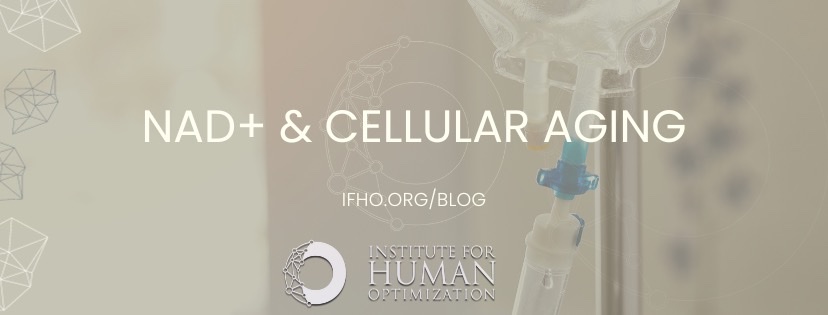NAD+ and Cellular Aging
NAD+ (nicotinamide adenine dinucleotide) is an essential molecule found in all living cells. It plays a critical role in various biological processes, including energy metabolism, DNA repair, and aging. This week on the blog , we will explore the connection between NAD+ and cellular aging.
Introduction
When we are young , our cells are full of energy and function optimally. However, as we age, our cellular processes start to slow down, leading to a decline in overall health and functioning. This process is known as aging. As we age, our cells undergo changes that can lead to a decline in their function. Aging is a complex process influenced by various factors such as genetic predisposition, lifestyle choices, and environmental factors. One key aspect that has been gaining attention in the field of aging and longevity research is the role of NAD+ in cellular aging.
NAD+ and Cellular Function
NAD+ stands for nicotinamide adenine dinucleotide, which is a coenzyme found in all living cells. It plays a crucial role in cellular metabolism by acting as an electron carrier in many biochemical reactions. Essentially , NAD+ acts as a fuel for our cells by converting the energy we get from food into cellular energy, known as ATP (adenosine triphosphate) powering essential processes such as DNA repair, energy production, and cellular signaling. These processes are essential for maintaining healthy cells and organ function. Without them, our cells would not be able to perform their necessary functions and could lead to a decline in overall health.
NAD+ Levels and Aging
One of the key factors that contribute to aging is the decline in NAD+ levels within our cells. As we age, our bodies produce less NAD+, leading to decreased cellular function and an increased susceptibility to age-related diseases. Decreased NAD+ levels manifest at organismic, tissue, cellular and mitochondrial levels.
Research has shown that NAD+ levels decline with age in a variety of tissues, including muscle, brain, and liver. This decrease in NAD+ is associated with various age-related diseases such as neurodegeneration, cardiovascular disease, and metabolic disorders.
Restoring NAD+ Levels
Given the critical role of NAD+ in cellular function and aging, scientists have been exploring ways to restore NAD+ levels in aging cells. One approach is through supplementation with precursors of NAD+, such as nicotinamide riboside (NR) or nicotinamide mononucleotide (NMN). These compounds can be converted into NAD+ within our cells, helping to boost cellular function and potentially slow down the aging process. There are various methods of NAD+ supplementation, including oral supplements, intravenous infusions, and intramuscular injections.
NAD+ Bioavailability and Healthspan
While NAD+ supplementation shows promise in promoting healthy aging, it is essential to note that not all forms of NAD+ are equal. The bioavailability of NAD+ can vary depending on the method of supplementation. For example, oral supplements may have lower bioavailability due to breakdown during digestion, while intravenous infusions bypass this issue and provide a more significant boost in NAD+ levels. However, NAD+ IVs may be uncomfortable for some. Intramuscular injections have also been used, but research is still ongoing to determine the effectiveness and safety of this method. Additionally, individual factors such as age and overall health can also affect the bioavailability of NAD+.
Conclusion
In conclusion, NAD+ is a critical molecule in cellular aging and overall health. As we age, our NAD+ levels decline, leading to decreased cellular function and an increased risk of age-related diseases. Supplementation with NAD+ precursors shows promise in restoring NAD+ levels and potentially slowing down the aging process. However, more research is needed to determine the most effective method of supplementation for longevity.





Leave a Reply
Want to join the discussion?Feel free to contribute!